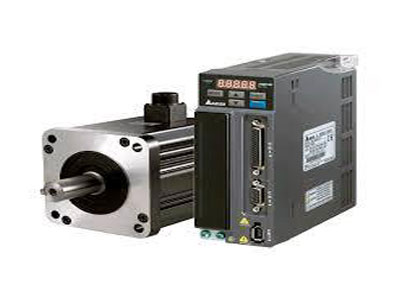Key Takeaway
A servo drive typically lasts between 20,000 to 30,000 hours, though this depends on usage and maintenance. Regular cleaning and inspections are key to extending its lifespan.
Operating environments also affect durability. Dust, moisture, or extreme temperatures can shorten the lifespan. Proper ventilation and avoiding overloading will help ensure your drive performs efficiently for years. Using high-quality components and following the manufacturer’s parameters will keep it running smoothly.
Average Lifespan of Servo Drives
The average lifespan of a servo drive typically ranges between 10 to 15 years under normal operating conditions. However, this can vary depending on the environment, workload, and maintenance practices. Some well-maintained servo drives can last even longer, while others may fail prematurely due to harsh operating conditions or lack of proper care.
Factors like temperature, dust, moisture, and exposure to electrical noise can all impact the longevity of a servo drive. In most industrial environments, servo drives are expected to function consistently for years without failure. However, it’s important to remember that every servo drive has a rated operational lifespan, which can be shortened or extended based on how it’s used and maintained.

Factors Affecting the Lifespan of a Servo Drive
Several factors influence the lifespan of a servo drive, and recognizing these can help you manage and prolong its operational life. One of the primary factors is temperature. Excessive heat can damage the electronic components inside the drive, leading to shorter lifespans. Overheating can be caused by running the drive at maximum capacity for extended periods or operating in environments with poor ventilation.
Vibration is another factor, especially in applications where the drive is mounted on machinery that experiences constant motion. Continuous vibration can lead to internal wear on components, such as circuit boards and connectors.
Electrical noise and voltage fluctuations are also significant contributors to a shortened servo drive lifespan. Power surges, spikes, or inconsistent voltage can cause internal electrical damage, leading to premature failure. Ensuring a stable and clean power supply is essential for extending the drive’s life.
How to Extend the Life of a Servo Drive
Extending the lifespan of a servo drive requires consistent maintenance and attention to its operating environment. Proper cooling and ventilation are essential to prevent overheating. Ensure that the drive has adequate airflow and that its cooling fans are functioning correctly. Regularly inspect the ventilation system to prevent dust or debris from clogging up the airflow.
Another critical practice is maintaining a stable electrical supply. Using surge protectors, voltage regulators, and isolators can shield the drive from sudden electrical spikes and prevent potential damage.
Regular inspections and maintenance are key to prolonging the life of your servo drive. This includes checking for loose wiring, cleaning dust from around the drive, and ensuring that the drive operates within its rated capacity. Avoiding overloading the drive and making sure it is aligned with the required load specifications will reduce stress on the components.
By taking proactive steps to maintain the drive, you can significantly extend its operational lifespan and ensure that it remains reliable for years.
Common Problems That Reduce Servo Drive Lifespan
There are several common issues that can reduce the lifespan of a servo drive if not addressed early. Overheating, as mentioned earlier, is a frequent problem. When the drive is operated in a hot environment without sufficient cooling, it leads to thermal stress on the internal components, causing them to degrade faster.
Another common issue is electrical noise, which can cause erratic behavior or even internal damage. This noise often originates from poorly insulated cables or other nearby electrical equipment. Over time, this can affect the drive’s performance and reduce its life.
Mechanical wear is also a concern. If the drive is subjected to constant vibrations or impacts, its internal parts, such as circuit boards and connections, may become loose or damaged. This can lead to intermittent failures or a complete breakdown.
By monitoring these issues and performing regular maintenance, you can avoid most of the problems that shorten the lifespan of a servo drive.
Signs a Servo Drive Needs Replacement
Knowing when to replace a servo drive can save you from unexpected downtime and costly repairs. One of the most obvious signs is a decline in performance. If the drive starts losing its ability to maintain precise control or exhibits irregularities in motion, this may indicate internal wear or electrical issues.
Another key indicator is overheating. If the drive consistently runs hot even under normal operating conditions, it may be a sign that the internal components are breaking down. Frequent error codes or unexpected shutdowns are other signs that the drive may be nearing the end of its life.
Finally, visible physical damage such as cracked housings, burned-out circuits, or loose connections are clear indicators that a replacement is needed. If you notice any of these signs, it’s better to replace the drive sooner rather than wait for a total failure, which could lead to expensive downtime.
Conclusion
Maximizing the lifespan of a servo drive comes down to proper maintenance, monitoring, and operating within the recommended specifications. By keeping the drive cool, ensuring a clean electrical supply, and performing regular inspections, you can extend its life significantly.
Understanding the factors that affect its durability, such as temperature, vibration, and electrical noise, allows you to take preventive measures. When you notice signs of wear or declining performance, timely replacement will ensure that your operations continue smoothly without unexpected failures. With the right approach, you can make the most out of your servo drives and maintain efficient, reliable performance for years.
